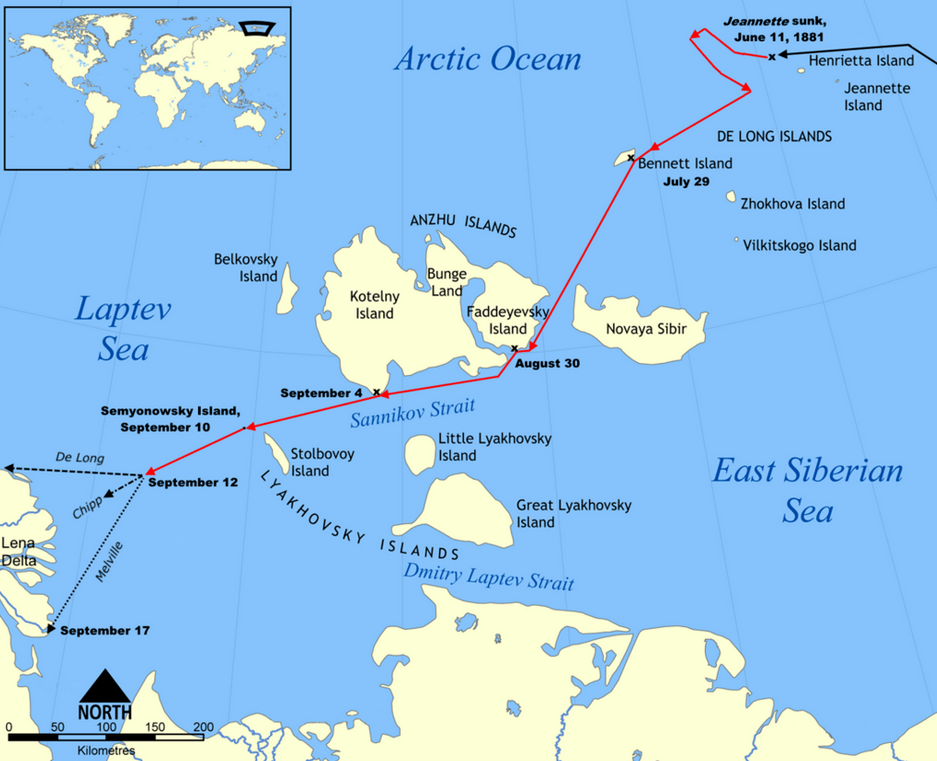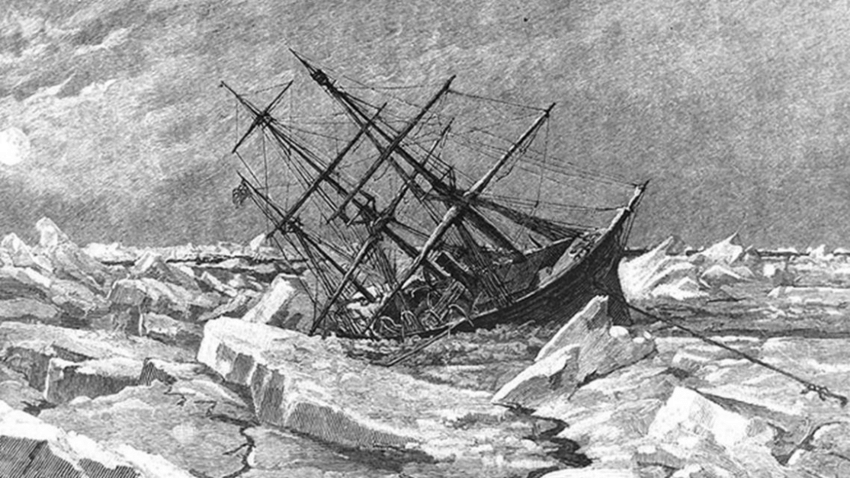The voyage of the USS Jeannette stands as one of the most dramatic and heartbreaking tales of Arctic exploration. This ambitious American expedition, under the command of Lieutenant Commander George W. De Long, set out to reach the North Pole, an elusive objective that tantalized adventurers in the 19th century. Despite meticulous planning and advanced technology at the time, Jeannette’s journey turned into a harrowing struggle for survival. Here is a detailed timeline of the USS Jeannette’s ill-fated voyage.
The Grand Departure
July 8, 1879
The USS Jeannette set sail from San Francisco, California, with 33 men onboard. James Gordon Bennett Jr., the owner of the New York Herald, who had a keen interest in Arctic exploration, generously funded the expedition. The ship aimed to reach the North Pole via the Bering Strait, believing in an open polar sea that some theorists of the time posited.
The First Winter
September 5, 1879
The Jeannette entered the ice pack north of the Chukchi Sea. As winter approached, the ship became trapped in the ice, which would be the beginning of its long, frozen imprisonment. The crew prepared for the harsh Arctic winter, confident they would eventually break free and continue their journey.
Endless Drift
1879 – 1881
For nearly two years, the Jeannette drifted in the pack ice. Instead of breaking free as De Long had hoped, the ship was carried endlessly westward and northward by the ice. Despite the grueling conditions, the crew conducted scientific observations and maintained their hope of reaching warmer waters.
The Crushing Blow
June 12, 1881
After almost two years of being trapped, the pressure of the ice intensified, and the Jeannette was finally crushed and began to sink. The crew abandoned the ship, transferring their supplies to three smaller boats and sledges. The sinking of the Jeannette marked the beginning of a perilous journey over the ice and open water.
The Trek Across the Ice
June – September 1881
With limited supplies and facing extreme cold, the crew embarked on a treacherous journey over the ice towards the Siberian coast. The relentless environment and physical toll soon began to weigh heavily on the men. Some perished from exposure and exhaustion.

Separation and Desperation
September 12, 1881
As they approached the open waters of the Laptev Sea, a fierce storm separated the three boats. De Long’s group, in one of the boats, managed to reach the Lena Delta but faced severe hardship. George W. Melville, the Chief Engineer, successfully piloted another boat to safety. The third boat, led by Executive Officer Charles W. Chipp, disappeared with all hands and was never seen again.
Final Struggle for Survival
September 19, 1881–October 30, 1881
De Long’s party struggled to survive in the harsh conditions of the Lena Delta. Despite dwindling supplies and the brutal cold, they pressed on. However, one by one, the men succumbed to starvation and the elements. De Long kept a meticulous journal until his final days, which served as a poignant record of their last moments.
Rescue and Recovery
March 1882
Chief Engineer George Melville, who had survived with his group, launched a search for De Long and the rest of the crew. He discovered De Long’s final camp and retrieved the bodies of De Long and his companions for burial. Melville’s lifesaving efforts and relentless search ensured that the story of the Jeannette’s voyage and ultimate fate would be told.
Conclusion
The voyage of the USS Jeannette remains a powerful narrative of exploration, endurance, and tragedy. While the mission did not achieve its goal of reaching the North Pole, the story stands as a poignant reminder of the era’s daring spirit and the unforgiving nature of the Arctic. The accounts left behind by De Long and his crew endure as a lasting legacy of their courageous but ill-fated expedition.
POPULAR TODAY
Since its opening in 1995, DIA has been at the epicenter of numerous speculations, encompassing themes from the New World Order to alien involvement.

